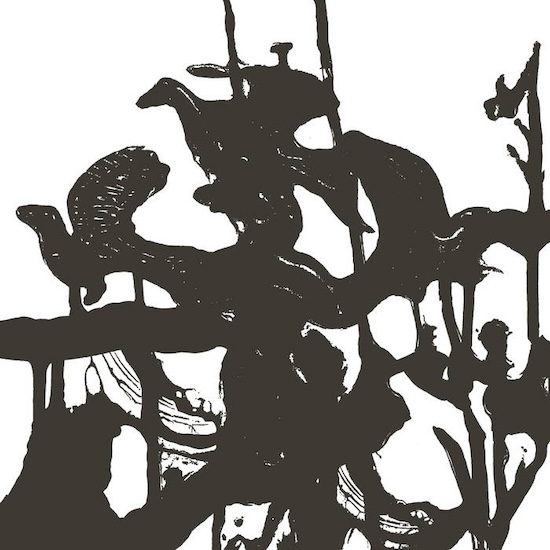Combining electronic passages with acoustic percussion can easily fall into cliché. The Lithuanian duo Santaka, however, do a surprisingly inventive and engaging job. Their music is primarily linear and static but full of sonic interweaving, with a subcutaneous pulse driven by the acoustic sound of percussion, plus beats and synthesizers.
Manfredas, whose look reminds me of Holger Czukay, is known for weaving psychedelic sounds into house and disco. Marijus Aleksa contributed to London’s jazz resurgence in the 2010s, collaborating with figures like Joe Armon-Jones and Nubya Garcia. They weave these threads together to create endlessly swirling suites in which electronic layers intertwine with complex, multi-channel rhythmic structures. While last year’s album, No Rivers Here, was steeped in the club aesthetic; this year Santaka immerse themselves very much in the Lithuanian tradition.
Ramybė / Autoportretas builds a dark and mysterious atmosphere, where a non-obvious loop is based on a composition by Rytis Mažulis and Melos Collective, one of Lithuania’s most essential and distinctive composers and a women‘s collective working in the field of new vocal music. The eight-minute ‘Ramybė’ sounds like a frozen sound installation, developing non-linearly, revolving around punctuated percussion, dreamlike phrases interspersed with radio samples, and cut-and-paste orchestral sounds. There are vocalizations piercing through the texture, reminding me of what Max Loderbauer and Jacek Sienkiewicz once did with highlander chants on their mesmerizing 2015 release, Ridges.
The piece gradually develops, taking on a quasi-kosmische sound, somewhat reminiscent of the subtle playing of the Moritz Von Oswald Trio. The finale transforms into an organ-like, sacred sound to finish up with bubbling electronics that dissolve into a mix of percussion and cut-up phrases. In ‘Autoportretas’, trapped voices coalesce as if from a genie in a bottle around Marijus’s delicately outlined percussion. Taking on a slightly trance-like, ritualistic overtone, it doesn’t explode but smolders imperceptibly.
Voices formed the basis for XRAM, which resulted from sessions with wind virtuoso Saulius Petreikis, alongside two other musicians, Mindaugas Vadoklis and Andrei Rusu. Here, rotating and swirling particles of sound remind me of the work of Kieran Hebden and Steve Reid. The direction is set by a bass rhythm against which the musicians weave instrumental phrases, with siren-like seductive vocals swirling in the background. ‘Crescent’ is again a pulsation albeit programmed in synths, full of dreamscapes, rather unobvious solutions against ambient passages.
Santaka develop rhythmic cut-outs based on fragments, strange juxtapositions, interwoven samples, percussive interventions, or synth passages. Everything comes together here in a swirling trance, joined by further elements: snippets of dance motifs, vocal samples, computer-programmed bass mutations, and percussive overtures.
Santaka is a duo that doesn’t lose themselves senselessly in a trance but vigilantly develops their ideas with each passing minute. They do not exude sound but expand their sonic palette by adding further elements, subtly building their meditative worlds.


